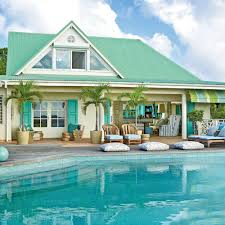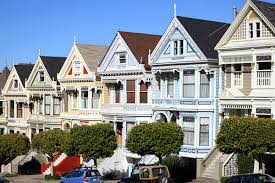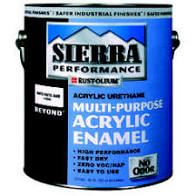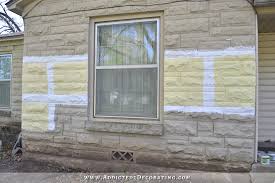best exterior paint colors to sell a house

The right paint can protect a home’s exterior and enhance its overall look. Good exterior paint shields a home against the elements and makes it stand out. It boosts curb appeal, makes a statement, and adds value to a home. Paint takes up a large part of a home and must be selected with the utmost care. While finding the perfect color for a home’s exterior might be a difficult task for many home sellers, here are some tips you can share with yours to ensure they choose color schemes that complement their homes. Look to the Surroundings The environs of a home should influence outdoor paint schemes. Home sellers should choose palettes based on the natural features. For example, those with beach homes can take inspiration from the water, sky, and sand. Those selling country homes can take cues from the trees and rocks. Exterior features can have a great impact on the look and feel of a home. Advise your sellers to use colors found around their homes to create a seamless look.

Focus on the Architecture Every home has a personality; it can be defined by its geographic location, the neighborhood, or its architectural details. Home buyers are attracted to homes because of their designs and features. Homeowners should therefore choose exterior paint colors which reflect the personality of their homes. For instance, those with older homes can pick subdued color palettes while those with newer homes can choose trendy, hip colors. Sellers can also select exterior paint colors based on where they live. Some regions are shaped by their architectural styles and choosing exterior colors based on the area’s characteristics can help homeowners to create original looks. The best thing about architectural features is that they can be emphasized to showcase a look that is unique to a home and area. Sellers whose homes are made of brick and stone can choose earthy colors to accentuate the features. Pick At Least 3 Shades An exterior color scheme should be comprised of 3 shades: the field color, the accent color, and the trim color.

The field color is the dominant color, the accent color highlights the doors, shutters, and other small features, while the trim color is used on the railings, roof edging, door and window casings, and other trim work. The field color should contrast with the trim color. If the field color is dark, the trim color should be white or another neutral shade.
home decor for small apartmentsIf the main color is light, the trim color should be dark.
wall art decor dubaiThis produces a distinctive, dramatic effect.
wall decor canada free shippingEncourage homeowners to think outside the box when selecting accent colors but discourage them from going overboard.
christmas tree decorations ideas 2013
Take Inspiration from the Neighbors Most neighborhoods have set color schemes which influence their look. Home sellers should walk around their neighborhoods and scrutinize the existing homes. If their neighbors’ homes have coordinating styles, it might be in their best interests to copy the style. If every house has custom colors which don’t match the others, they can pick unique colors.
painting exterior wood front doorHomeowners must think of the visual effect they want to achieve.
diy wall decorations living roomThey should choose hues that make their homes look unique but still blend into the neighborhood. Exterior colors are unlike interior ones and can affect the outdoors as well as the entire neighborhood. While it’s good to stand out to potential home buyers, it’s never good to stand out in the wrong way.

This is why homeowners must pay a lot of attention to choosing the right palette. Many factors come into play when selecting exterior paint colors and home sellers must tackle each one of them.We believe in you. Color can transform you. We'll help you make changes-big or small-from start to finish. Check out unique project ideas and helpful how-to videos to bring personality into your home. Browse a variety of rooms and find inspiration for your own home–inside and out.Watch your vision come to life with our color visualizer. Find the Dutch Boy® retailer nearest to you. Get tips and advice to help you choose the perfect color. Find the perfect product and finish to bring your idea to life.Skip to main content Homes » Decorating » Pick the Perfect Exterior Paint Color Nothing screams curb appeal like a fresh coat of paint that's the perfect color for your home, and finding the right shade is easier than you think! More Videos from Coastal Living

You Might Also LikeWhat if I told you the color scheme you choose to decorate your retail store with or the color palette for your website and logo could severely impact your sales and influence whether customers are enticed to make a purchase from you or not? The psychology of color and the way we human beings interact with and react to our environment in accordance to color is a science that has been rigorously tested and applied and something that has been studied for hundreds of years. So, isn't it about time you started using some of the findings to your advantage? In this post, I'll be taking a look at how color affects the human psyche and how merchants can use that knowledge to their advantage. So whether your store and merchandise displays need a new paint job, or whether you're deciding the theme for your next seasonal window display, this post will give you a solid understanding of how color impacts consumer purchase decisions. If you're still on the fence about whether choosing the right color will actually impact your sales, here's a few things to consider.

When a prospective customer first walks into your store, they make a sub-conscious judgement about your retail environment and product within 90 seconds on the initial viewing. Guess how much of the first impression is based on color alone? Roughly 62% to 90% according to researchers. To make matters more interesting, 52% of shoppers don't return to a store if they don't like the aesthetics. If that alone doesn't make you pay more attention to color, then maybe knowing that 93% of purchasing decisions are based on visual appearance and 85% of consumers citing color as the primary reason for why they purchase a product, hopefully will. Another key area where color plays a big difference for retailers is signage. For example, color plays a significant role in how often ads are read, coming in at about 42x more than black and white ads, while boosting comprehension, learning and reading up by significant margins as well. So whether its your "hours of operations" sign, "we're open/closed" sign, or big "sale" sign, be sure to add a touch of color if you want them read and paid attention to.

It might be hard to imagine that color could influence spending habits to such a degree, but the fact of the matter is that it's a critical variable that influences us on both a conscious and subconscious level. For example, it's fine and dandy to hear that the color blue emotes feelings for trust and dependability since we even have the term "true blue" in our vocabulary or see it regularly in the logos of financial institutions. But, according to a study published in the Journal of Business Research, customers are actually 15% more likely to return to stores with blue color schemes than to those with orange color schemes, which makes a lot of those intuitive insights true and credible. Another neat example has to do with the color pink, which is thought to have calming effects on the perceiver. According to research published in the Journal of Orthomolecular Psychiatry, scientists discovered that when a person sees pink, it slows people's endocrine systems and relaxes tense muscles.

In other words, it can be quickly associated with the word "relief." Now, isn't there a company that sells a pink syrup that's meant to relieve a number of pain inducing symptoms? Oh right, Pepto Bismol.But that's just the beauty of color and its effects on the human psyche. Or consider why all sale signs or clearance signs are red. According to a study published in the journal Emotion, professor Andrew Elliot found that people react faster and more forcefully when they see the color red, with the primary reason behind the phenomena being that the color red enhances physical reactions as it is programmed into our psyche as a cue for danger. Retailers use this information to grab a customer's attention and cue them to take action in making a purchase. Another interesting case study occurred when during a marketing experiment, Heinz changed the color of its classic ketchup from red to green, a color known to evoke emotions relating to health, tranquility, and wealth. Over $23 million in sales in just the first month, amounting to what what was the highest sales increase in the company's history at the time.

Now that you know color matters, the next thing you're probably wondering is how do you get it to work for you. When it comes to picking the perfect color scheme, the first question you'll have to ask yourself is "who is your brand's target market?" Are you targeting children, teenagers, young adults, adults, or seniors? Based on your customer demographic and behavioural data, your choice of color will vary dramatically. Simply put, your choice of color scheme can have a huge impact on the type of shoppers you attract, with certain color schemes being more preferable for one type of retail venue over another. Here's a look at what I mean: There's also a slight gender difference when it comes to color preferences as depicted in the graphic below, which can come in really handy, especially when your store is specifically targeting one gender over the other. Alright, now let's get into the nitty-gritty of actually going about picking a color scheme. There's several ways to approach this as any designer or artist would attest, but here are the most common ways to pick a scheme.

You can pick a color scheme that is: Lastly, I wanted to include this infographic from Marketo to highlight how consumers react to individual colors. This is handy when you're just starting out and picking your logo colors all the way to picking the primary and accent colors for your retail store. That's a lot to digest when it comes to using the science of colors in a retail setting. However, I'd love to hear about how you went about picking the colors for your brand, products, and most importantly your retail store. Or, share with us what study, insight, statistic, or graphic stood out most to you from this post and how it changed your outlook when it comes to the influence color has on consumer habits.If you like this post, you'll love How Retailers Manipulate Sight, Smell, and Sound to Trigger Purchase Behavior in Consumers and How To Hire an Interior Designer for Your Retail Store and Why You Need One. (Image Credits: Marketo, KISSMetrics, WebPageFX, Pepto Bismol)